








DJ Timeless and The MC have reunited to host a “salon” after several years out of the performing world. The two hip-hop artists plan to share work from their delayed new album, but the night turns into not a showcase of just their own art, but a conversation about relevant topics such as authenticity, culture, parenthood, hip-hop history, and the meaning of music in their lives.
Timeless and The MC have been working together for a long time, but have finally returned to performing after a several year hiatus due to the pandemic and other factors. While they have different lives outside of their work creating in the hip-hop world, their connection and artistic collaboration is clear.
YOU CAN LEARN MORE ABOUT THEIR HISTORY AS A DUO THROUGH OUR IMMERSIVE EXHIBIT AS YOU ENTER THE THEATER!


Idris: I am definitely afflicted with an abundance of ideas. I see stories all over the place, for better or for worse. This one–it was a question first that I was thinking about. I was born in 1977 and hip-hop was born in the 70s. The kids, the listeners, we were the curators of that. Our parents didn’t buy us that. We found it and it was something between us. So now that many of us are parents, the question becomes: How am I going to regard this music and when am I going to play it [for my kids]?

Kyle: [Idris] and I are very close in age (5 days apart!), and I grew up loving hip-hop, being fascinated by hip-hop, it being contraband in my house in some ways. The idea of combining it with theater and doing a deep examination on it was just tremendously exciting. And I’m a parent. I have a six-year-old. And this is about wrestling with when is the right time to introduce great works of art or works that wrestle with thorny questions, with obscenity, with explicit lyrics, violence, and sexuality, to kids.
Idris: The breakbeat plays are me trying to–in terms of form and content–explore the ways in which hip-hop culture has integrated itself into the lives of young people, but particularly Black men. I’m a first-generation suburban Black guy just trying to navigate all these things and hip-hop is a major movement for America but definitely for Black America. And that was my generation. So I wanted to capture what that experience was. As a rapper and a poet I’ve written about it a lot, but as a dramatist I wanted to capture it as well.
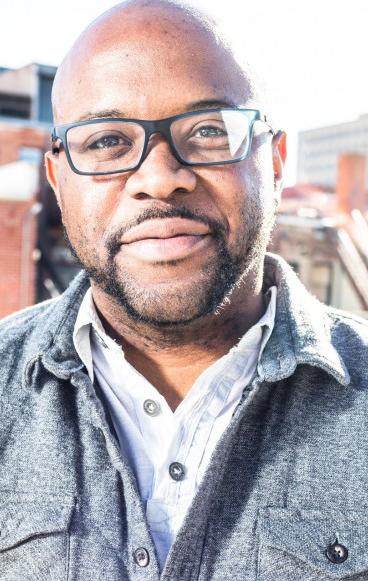

Idris: When I was offered this commission, I started really thinking about what it is. Is it a solo piece? Is it a play? Is it a concert? Is it a Ted Talk? Is it a history lesson? How do you make a history lesson dramatic and interesting for an audience? What is this thing going to sound like? How is this thing gonna move?
Kyle: The play has this really interesting structure. There’s not much of a template for it. I know hip-hop theater exists; but I think we are sort of building the plane as we fly it. It oversimplifies it to call it a musical. What is this? Is it a concert? Is it a Ted Talk? Is it a play? Is it a musical? And the answer is yes. And I think that’s ultimately why it works. Because it’s all of those things. And because we’re looking for different stuff now. “What we need are new forms!” Isn’t that Chekhov? This is something different.
Kyle: A workshop’s great because you have this space to think about the story of the play, to focus on the words and the story and the plot without the immediate end goal of production. And I think we cracked the play [during the Colorado New Play Festival]. I distinctly remember coming back to the room and [dramaturg Deanie Vallone] and Idris sort of having the idea, “It’s a salon!” And this “Beautiful Mind” writing being on the white board.
The other essential part [of a workshop] is having an audience that we could put it up in front of. The guys went up onstage and the house sort of exploded. We were able to watch this affect people and be like, “Oh my gosh, this piece works!” The other theaters that were there were like, “When is this getting done? Can we bring it to our theater?”
Idris: It’s been a long, very strange journey of discovery. I approached it from the outside in; I was so drawn to the form of it that it took me a while to uncover what [the MC] is trying to say or what they are trying to work on. The psychodrama was the last coat of paint. I remember my younger son was still in the stroller and I would walk him in the morning and I had these earbuds in and this transcription app and I would just talk as if I was the MC. And that’s how a very crude version of that first song came about…I just rapped that out. That whole opening I sort of talked out. What was great about that was that it helped me find the voice of the MC, the rhythm and cadence. I come from rap performances. I made albums and was in groups for many years. I bring a lot of that into the theater; that’s where I learned a lot about live performance, lyric, and language.
Kyle: Come and have an open mind. We’re just telling a story and the story will touch on things that people will recognize and feel familiar to them but it may happen in a different way and it may feature people you don’t normally see onstage and it may sound different, but there will be elements everyone recognizes. That’s what’s cool about it.
Idris: I’m grateful to get to do this. It’s art imitating life. The characters are like, “Yo, it’s been a while since we’ve been able to get together.” And I’m like, “Word!” It’s gratitude. And it’s a process. It’s not ever finished, really. Audiences bring a whole different life to it. Theater is a dialogue, so I’m just excited to sit back in the theater and watch those first audiences.

The National Parent Teacher Association set their sights on censoring music in the mid-1980s, forming the committee Parents Music Resource Center. The group sought to require a labeling system similar to that of movies (G, PG, R, etc.) for music albums. Initially, the group looked to a rating system with labels such as “V” for violence or “X” for sexually explicit content, but that did not come to fruition. The PMRC also wanted all song lyrics printed on album covers, albums with explicit covers kept behind the counters at record stores, and a requirement that record companies reassess the contracts of artists who engaged in sexually explicit or violent behavior in concert.
The organization mailed letters of inquiry to influential people nationwide, including politicians and their wives who ended up becoming the backbone of the movement. These “Washington Wives” included women such as Tipper Gore and Peatsy Hollings, both married to senators, and Susan Baker, wife of a former cabinet secretary. They recruited an unlikely cast of supporters including a Christian TV host, a music professor, the mayor of Atlanta, Joseph Coors, and Mike Love of the Beach Boys.
A Senate hearing occurred in September of 1985, with legendary musicians John Denver, Frank Zappa, and Dee Snider testifying to the dangers of censorship against the PMRC’s panel advocating for the labeling system. While the PMRC was unable to make their specific labeling system a reality, a deal with the Recording Industry Association of America (RIAA) led to labeling of albums or printing of lyrics on album covers starting on November 1, 1985, but the negotiations continued for five more years.


By 1990, the labeling became standardized with the black and white “Parental Advisory: Explicit Lyrics” label located in the bottom right corner of many albums. The debate continued, with Congress holding additional hearings in 1994 which led to the slightly revised label: “Parental Advisory: Explicit Content.” The Senate held more hearings on violence in music in 1997 and 1998.
Excerpt from Frank Zappa’s testimony:
“No one has forced Mrs. Baker or Mrs. Gore to bring Prince or Sheena Easton into their homes. Thanks to the Constitution, they are free to buy other forms of music for their children. Apparently, they insist on purchasing the works of contemporary recording artists in order to support a personal illusion of aerobic sophistication.”
While seeing an “e” next to a downloaded track or a “parental advisory” label on an album might now have much less impact, in the 1980s and 1990s, it had a notable effect on the music industry. Some stores would not allow those under 18 to buy labeled albums or just refused to stock those albums at all. Musicians were often encouraged by record companies to make their lyrics more palatable and saleable and lost contracts if they refused. Unlike film rating, which is de facto required for a film to find commercial success, music labeling is a voluntary system decided upon by record companies.


According to the RIAA:
“A determination that a sound recording contains PAL Content is not a statement as to whether the sound recording is or is not suitable for particular listeners. Nor is the absence of any notification that a sound recording contains PAL Content a statement that the sound recording is completely devoid of all references to strong language or depictions of violence, sex, or substance abuse.”
These fifteen songs were called out as the worst of the worst by the Parents Music Resource Center committee in 1985.
“Eat Me Alive”
- Judas Priest
“Bastard”
- Motley Crüe
“Darling Nikki”
- Prince
“Sugar Walls”
- Sheena Easton
“Animal (F**k Like a Beast)”
- W.A.S.P.
“Into the Coven”
- Mercyful Fate
“Strap On ‘Robbie Baby’”
- Vanity
“High ‘n’ Dry (Saturday Night)”
- Def Leppard
“We’re Not Gonna Take It”
- Twisted Sister
“Dress You Up”
- Madonna
“She Bop”
- Cyndi Lauper
“Let Me Put My Love Into You”
- AC/DC
“Trashed”
- Black Sabbath
“In My House”
- Mary Jane Girls
“Possessed”
- Venom
The “Filthy 15”L-R: Dee Snider, Frank Zappa, Tipper Gore and Susan Baker at the 1985 PMRC hearings. Photo credits: Mark Weiss, Getty Images; Lana Harris, Associated Press.
Fall 1985: PMRC committee leads to Senate hearing on the potential for labeling albums with “explicit content.”

Ice-T releases his first major studio album, Rhyme Pays, which is known as the first hiphop album to bear a “Parental Advisory” label.
Ice-T releases “Colors” on the soundtrack of the film of the same name.
June 1993: Reverend Calvin Butts steamrolls a pile of “offensive” rap tapes and CDs as part of a protest.

1992:
Ice-T and Body Count release their song “Cop Killer” which garnered the opposition of law enforcement agencies, politicians, and even then President George H.W. Bush.
2 Live Crew releases As Nasty as They Wanna Be including the popular song “Me So Horny.” In Florida, the album is ruled obscene and record purveyors are warned that they could be prosecuted for selling the album. A local retailer, Charles Freeman, is arrested after selling the album to an undercover police officer. Several days later, three members of 2 Live Crew are arrested after performing songs from the album at a club in Hollywood, Florida. After support from both national and international free speech advocates, the artists are acquitted and Freeman’s conviction is overturned on appeal.
December 1993: National Political Congress of Black Women holds a press conference to encourage the music industry to stop releasing gangsta rap records that demean women and promote crime.

June 2014:
Sir Mix-A-Lot performs “Baby Got Back” with the Seattle Symphony and dozens of women storm the stage to dance to the song.
November 2022: Ice-T becomes the longestrunning male actor in a television series with over 500 episodes as Odefin Tutuola on Law & Order: SVU.












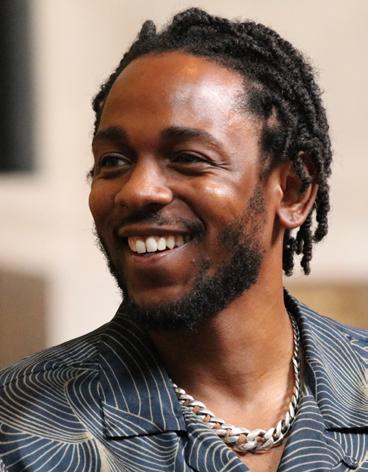








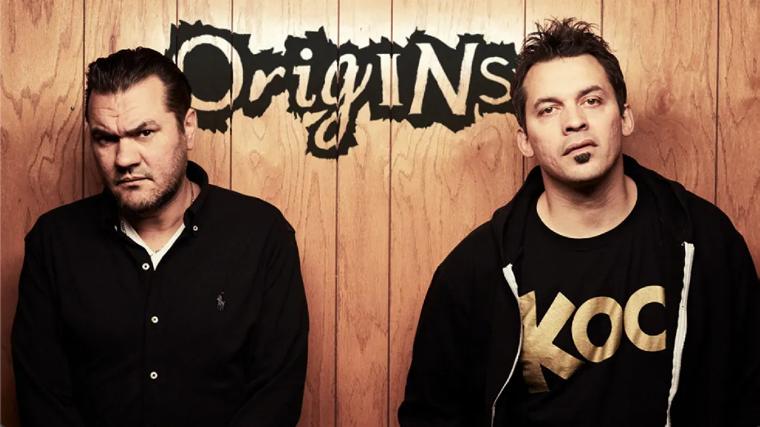

This year marks the 50th anniversary celebration of hip-hop, although the roots of the genre go much deeper and earlier and were influenced by the Black Arts Movement, R&B, traditional AfroCaribbean musical practices, social change, and more. The inciting incident of this groundbreaking music begins in the Bronx, 1973, where Black, Latinx, and Caribbean American youth came together in the block party scene. DJs were spinning funk and soul tracks, and legend has it that one night DJ Kool Herc put on two copies of the same record, looping the percussion tracks and hip-hop was born. Other DJs and Emcees such as Grand Wizzard Theodore, Grandmaster Flash, and Afrika Bambaataa started experimenting with different techniques such as scratching, breakbeats, freestyle, and improvised lyrics, forming the basis of the hip-hop and rap genre. MC Sha-Rock came in as the first female MC during the 70s when she became a member of Funky 4+1.


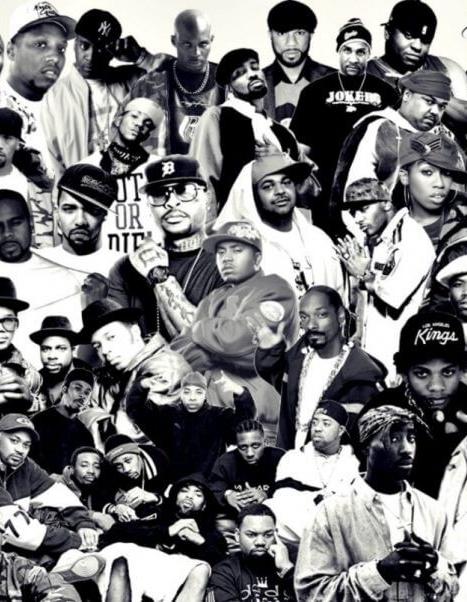
1979: The Sugar Hill Gang released what is widely considered the first hip-hop record, “Rapper’s Delight,” which reached the Billboard Top 40 and made hip-hop known in the wider musical community.
1981: Funky 4+1 was the first hip-hop group to appear on a national television show with their appearance on Saturday Night Live.
The 1980s saw an expansion of the genre, with artists bringing new ideas and sounds to hip-hop including more sampling, complex beats, and collaboration with other genres like electronic music. Hip-hop also spread to an international audience and began its ascent as a dominant musical genre.
In the early-mid 1980s, groups such as Run DMC, The Beastie Boys, and LL Cool J introduced what became known as “new school hiphop” which emphasized different beats, shorter song lengths, and social commentary.

Considered the “Golden Age” of hip-hop, the genre gained serious commercial success and new artists emerged with variations and innovations with each new song or album. Artists such as Tupac Shakur, Snoop Dogg, Queen Latifah, Notorious B.I.G., Da Brat, SaltN-Pepa, MC Lyte, and Tribe Called Quest were important artists in the scene.

“Gansta rap” or what Ice-T calls “reality rap” also became popular during this period, emphasizing the lifestyle of inner-city youth and gang culture. Artists such as Ice-T, N.W.A, and Wu Tang Clan (as well as some artists listed above) were forces within this subgenre.
By the turn of the millennium, hip-hop was a major genre in the mainstream music business, selling millions of records and burning up the charts. Artists such as Jay-Z, Lil’ Wayne, Ms. Lauryn Hill, Eminem, Missy Elliott, Puff Daddy, Eve, DMX, Lil’ Kim, and 50 Cent became major names in hip-hop. In 1995, the Grammy added a Best Rap Album category, with the first award going to Naughty by Nature.

During this period, hip-hop continued to be an important genre in the music industry, with artists enjoying both commercial and critical success. Many artists of this era incorporated other genres such as jazz, punk, rock, electronic, and indie rock into their songs. Artists such as Kanye West, Trina, Kendrick Lamar, Outkast, Mos Def, Kid Cudi, The Roots, M.I.A., and 2 Chainz were artists to watch.



Since the advent of more digital music availability, the genre has expanded and artists have been able to reach even larger audiences. Experimentation has continued to be a hallmark of hip-hop, with new musical and lyrical innovations infusing songs with energy and relevance to contemporary audiences. Some artists that have emerged in recent years include: Cardi B, Future, Nicki Minaj, Migos, Lil Nas X, Megan Thee Stallion, 21 Savage, and Tyler, The Creator.
Hip-hop will continue to be a force in music and culture for years to come, evolving as it has for the past 50 years.
(This is just a brief overview of the hip-hop genre’s history and there is so much more to explore, including the arts and music movements that predated hip-hop and influenced its genesis. For more information, see the reading and viewing lists at the end of this guide.)
Salt-N-Pepa promotional shot, early 1990s. Photo credit: Hubpages.com. Members of Wu Tang Clan perform at the Hip Hop 50 Live concert at Yankee Stadium, 2023. Photo credit: Theo Gargo, Getty Images. Naughty by Nature at the 1995 Grammys. Photo credit: HipHopScriptures.com. Poster from Hip Hop 50 Live at Yankee Stadium. Image credit: Billboard.• The play poses the question of when is the “appropriate” time to introduce children to various musical or media content. What do you think?
• What music has cultural or personal relevance in your life? Why?
• If you are a parent, what choices have you made about content you consume or allow your children to consume? Have those choices changed during your parenthood journey?
• Do you remember a time in your own childhood that you were exposed to content that might have been deemed “inappropriate”? What do you remember about that experience?
• If you were alive in the late 80s/early 90s, do you remember the advent of the “Parental Advisory” label? Were you allowed to consume content with that label or did you allow your children to consume that content? Why or why not?
• Who is your favorite hip hop artist? Song? Why? What about when you were younger? Has it changed? If so, why?
• Timeless and The MC say that “Music shapes the DNA.” What do they mean by that? How does it manifest in your own life?
• What do you find objectionable? Are there things you think children should not be exposed to? Why?
TRUE Skool, Inc.
“Milwaukee’s Center for Transformative Creative Arts and Hip-Hop Culture” provides programming, events, education, and community outreach for youth and families centered around hip-hop and related arts.
Radio Milwaukee’s Urban Alternative channel that highlights a wide variety of Black music, “connecting the culture.”
A Radio Milwaukee podcast about the search for the first hip-hop song recorded in Milwaukee.
A community center with a mission of “Bringing families on the southside of Milwaukee closer together, using programs that focus on higher-level thinking and self-expression through the elements of hip hop.”
credit: Getty Images; Bone Thugs-N-Harmony. Photo credit; Youtube Music; Jay-Z. Photo credit: Al Pereira, Getty Images; Easy E. Photo credit: Spotify; Gang Starr. Photo credit: Raymond Boyd, Getty Images; Kendrick Lamar at the 2018 Pulitzer Prize Ceremony. Photo credit: Wikipedia; A Tribe Called Quest. Photo credit: Karl Grant, Photoshot; Prince. Photo credit: Rolling Stone; An 1820 portrait of Beethoven. Image credit: Wikipedia; De La Soul album cover. Photo credit: The New Yorker; Schoolly D. Photo credit: David Corio; NWA, 1989. Photo credit: Raymond Boyd, Getty Images; Atmosphere. Photo credit: Dan Monick; Digable Planets at the 1994 Grammy Awards. Photo credit: Mitchell Gerber, Getty Images; The Pharcyde, 1993. Photo credit: Bob Berg, Getty Images; Macklemore, 2013. Photo credit: Getty Images; Too $hort, 2008. Photo credit: Wikipedia; 2 Live Crew at the MTV Music Awards, 1989. Photo credit: Jeff Kravitz, FilmMagic, Inc.; Dr. Dre and Snoop Dogg, 1993. Photo credit: Jeff Kravitz, FilmMagic; Nas. Photo credit: IMDb; Ice-T on the cover of Rolling Stone, 1992. Photo credit: Getty Images.
If you’re in Nashville, visit the amazing National Museum of African American Music to engage with the history of various genres, experience the music, and even get to take home playlists and tracks created during your visit!
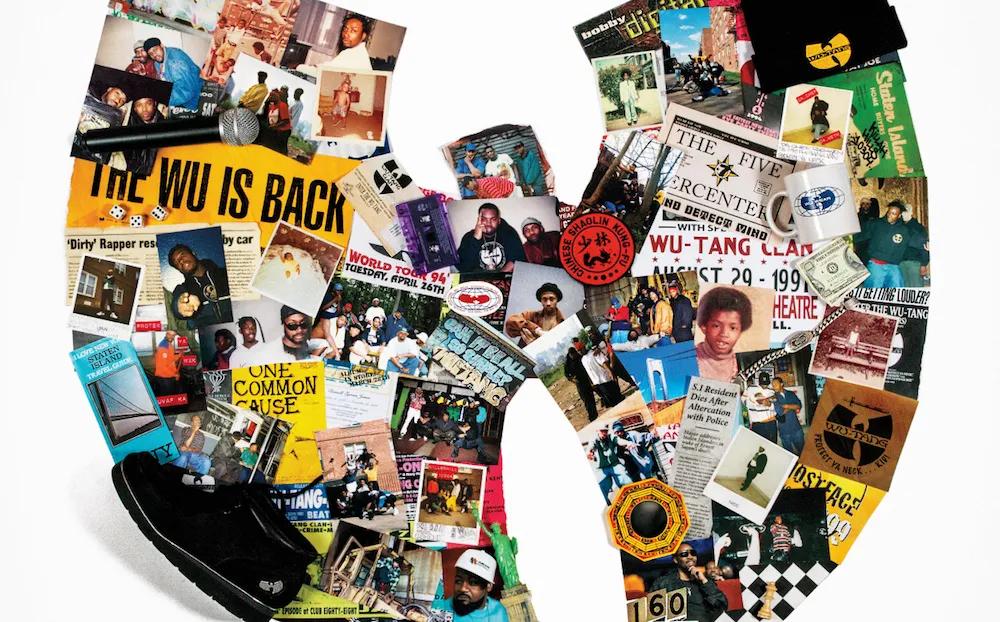

• The Tao of Wu by RZA
• Can’t Stop Won’t Stop: A History of the Hip-Hop Generation by Jeff Chang
• Contact High: A Visual History of Hip-Hop by Vikki Tobak
• God Save the Queens: An Essential History of Women in Hip-Hop by Kathy Iandoli

• Life Lessons from Hip-Hop: 50 Reflections on Creativity, Motivation, and Wellbeing by Grant Brydon
• Book of Rhymes: The Poetics of Hip-Hop by Adam Bradley
• Rivers of Rhythm: African Americans and the Making of American Music by National Museum of African American Music (multiple authors)
• Rapture (Netflix, 2018)
• Hip-Hop Evolution (Netflix)
• Wu-Tang Clan: Of Mics and Men (2019)
• Wild Style (1982)

• My Mic Sounds Nice: A Truth About Women and Hip-Hop (2010)
• Hip-Hop x Siempre (2023)
• The Freshest Kids: A History of the B Boy (2002)
• Style Wars (1983)
• Hip Hop 50 Live at Yankee Stadium (2023)
• The Real Queens of Hip-Hop (2021)
• Ladies First: A Story of Women in Hip-Hop (2023)
Milwaukee Repertory Theater’s Patty and Jay Baker Theater Complex is located in the Associated Bank River Center downtown at the corner of Wells and Water Streets. The building was formerly the home of the Electric Railway and Light Company.
The Ticket Office is visible on the left upon entering the Wells Street doors. The Quadracci Powerhouse is located on the Mezzanine and can be accessed via escalator or elevator.
Financial support enables The Rep to:
Advance the art of theater with productions that inspire individuals and create community dialogue.
✯ Advance the art of theater with productions that inspire individuals and create community dialogue;

✯ Provide a richer theater experience by hosting Rep-in-Depth, TalkBacks, and creating PlayGuides to better inform our audiences about our productions;
Provide a richer theater experience by hosting Rep-in-Depth, TalkBacks and creating PlayGuides to better inform our audiences about our productions.
Maintain our commitment to audiences with special needs through our Access Services that include American Sign Language interpreted productions, captioned theater, infrared listening systems and script synopses to ensure that theater at Milwaukee Rep is accessible to all.
✯ Educate over 21,000 students at 150+ schools in the greater Milwaukee area with Rep Immersion Day experiences, student matinees, workshops, tours and by making connections with their school curriculum through classroom programs such as Reading Residencies;

✯ Maintain our commitment to audiences with special needs through our Access Services that include American Sign Language interpreted productions, captioned theater, infrared listening systems and script synopses to ensure that theater at The Rep is accessible to all;
Educate over 20,000 students at 200+ schools in the greater Milwaukee area with Rep Immersion Day experiences, student matinees, workshops, tours and by making connections with their school curriculum through classroom programs such as Reading Residencies.
✯ Educate the next generation of theater professionals with our EPR Program which gives newly degreed artists a chance to hone their skills at The Rep as they begin to pursue their theatrical careers.
We value our supporters and partnerships and hope that you will help us to expand the ways Milwaukee Rep has a positive impact on theater and on our Milwaukee community.
Educate the next generation of theater professionals with our EPR Program which gives newly degreed artists a chance to hone their skills at Milwaukee Rep as they begin to pursue their theatrical careers. We value our supporters and partnerships and hope that you will help us to expand the ways Milwaukee Rep has a positive impact on theater and on our Milwaukee community.
4 1 4-290-5376
MILWAUKEE REP RECEIVES SUPPORT FROM: The Lynde and Harry Bradley Foundation
The Lynde and Harry Bradley Foundation
The Richard & Ethel Herzfeld Foundation
The Richard & Ethel Herzfeld Foundation
The Shubert Foundation